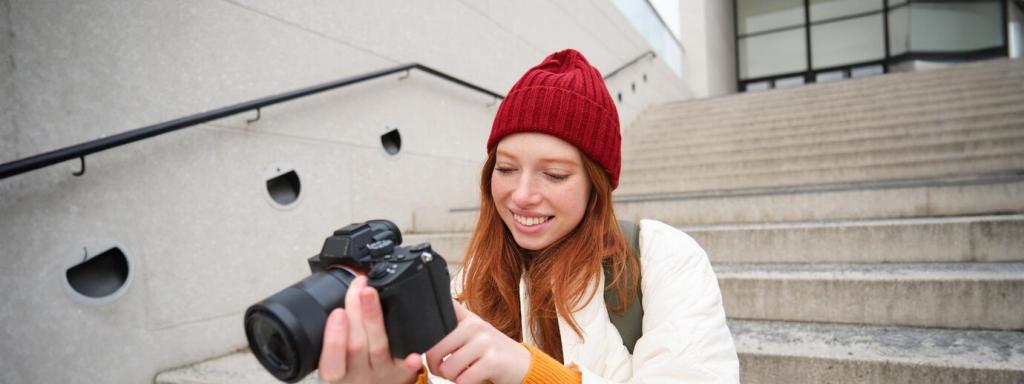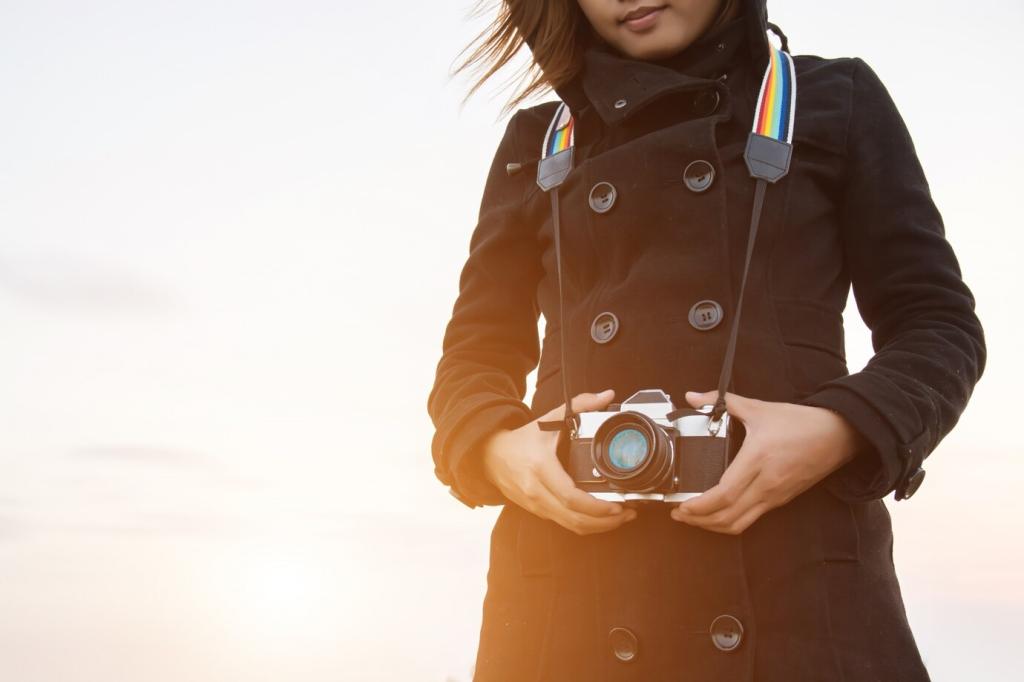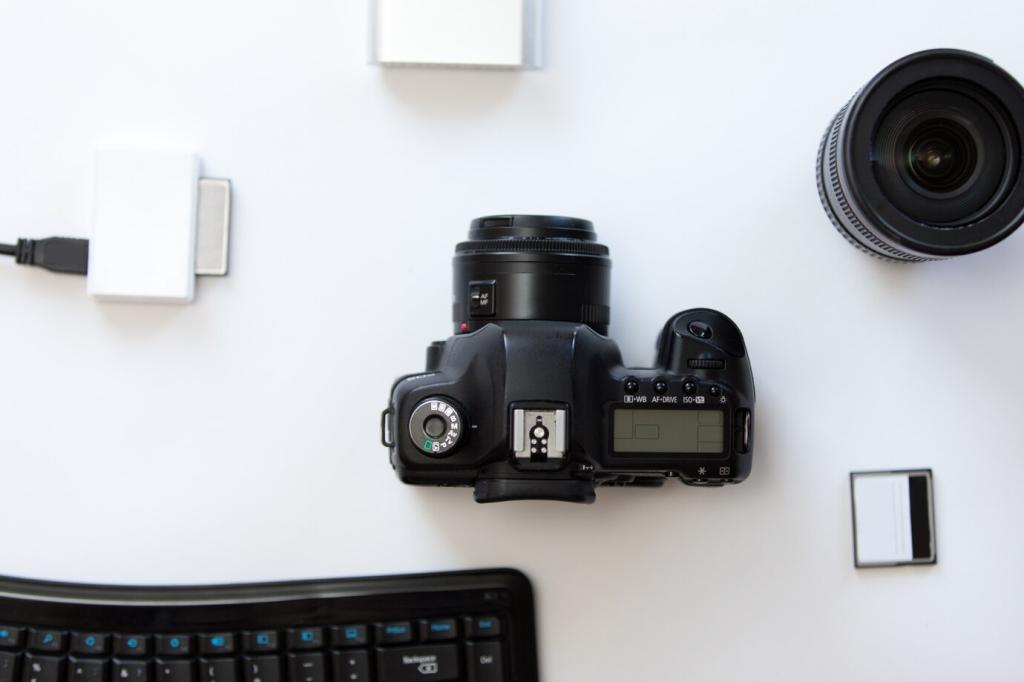
Build Your Bulletproof Kit
Chosen theme: Must-Have Camera Gear for Photographers. From dependable camera bodies and sharp lenses to rugged support, thoughtful lighting, and clever backups, explore the essentials that keep you creating under pressure. Jump in, share your own must-have gear, and subscribe for fresh, field-tested insights.
Sensor, Autofocus, and Ergonomics That Matter
A must-have body balances sensor performance with autofocus consistency and controls you can find without looking. When buttons fall under your fingers naturally, you react faster, miss fewer moments, and conserve mental energy for creative choices. What ergonomics make your camera feel like an extension of your eye?
Weather Sealing and Durability in Real Life
Rubber gaskets and magnesium frames are more than brochure speak. A sudden sea spray once soaked my rig; sealed doors and a tight card slot kept the shoot alive. If you work outdoors, that resilience becomes non-negotiable. Drop your best hard-weather survival story in the comments.
Why Dual Card Slots Save Careers
Redundancy is a must-have feature disguised as a spec line. A corrupted card at a wedding nearly broke me, but mirrored recording saved every frame. Dual slots turn panic into peace. If this safeguard has saved you too, subscribe and share the lesson that convinced you.
From environmental portraits to event coverage, a solid 24-70mm is a must-have because it adapts instantly to changing scenes. Crisp across the range, it lets you tell complete stories without constant lens swaps. If this is your anchor lens, tell us which focal length on it surprises you most.
Lenses You’ll Reach For Every Day
A 35mm or 50mm prime adds speed, separation, and personality. Wide apertures invite night streets, candlelit dinners, and intimate portraits without pushing ISO too high. The look is timeless and honest. Which fast prime has earned a permanent space in your bag, and why?
Lenses You’ll Reach For Every Day
Stability and Support: Tripods, Monopods, and Gimbals
01
Travel Tripod Essentials
A must-have tripod should be light enough to carry, tall enough for comfort, and stiff enough to resist wind. Carbon legs, a reliable twist-lock system, and an Arca-compatible head save time and frustration. Tell us your favorite compact setup, and subscribe for our field checklist to avoid tripod regrets.
02
Monopods for Events and Sports
When moving constantly, a monopod offers stability without losing agility. It lets you pivot, change angles quickly, and rest heavy glass between plays. The result is fewer missed frames and steadier panning. What events make your monopod indispensable, and how do you pack it efficiently?
03
Gimbal Smoothness for Motion
For hybrid shooters, a reliable gimbal is a must-have gear piece that transforms handheld jitters into cinematic motion. Calibrate carefully, balance often, and keep batteries warm in winter. Share your best gimbal tip, and join our newsletter for nuanced stabilization guides that go beyond basic settings.
Light You Can Shape: Flashes, Modifiers, and Reflectors
A compact speedlight is a must-have problem solver. Bounce off walls, flag spill with a card, and underexpose ambient for drama. A last-minute corporate headshot once happened in a hallway, saved by a single bounced flash. Share your favorite emergency lighting trick below.
Light You Can Shape: Flashes, Modifiers, and Reflectors
Softboxes shape light precisely; umbrellas are fast and forgiving. Learn to feather across your subject, aim past faces, and keep catchlights natural. These small tweaks lift portraits instantly. Follow for tutorials that turn one light into many looks without hauling a studio on your back.



Circular Polarizers for Color and Glare Control
A circular polarizer deepens skies, cuts reflections on water, and saturates foliage. It turns mushy midday contrast into rich, printable frames. Remember to adjust as you recompose. Tell us your favorite CPL brand, and subscribe for our quick guide to avoiding uneven polarization on ultrawide lenses.

Neutral Density for Motion and Video
ND filters are a must-have for long exposures and maintaining cinematic shutter speeds in bright light. Water turns silky, crowds blur into whispers, and video looks smooth without tiny apertures. Share your ideal ND strength, and we will send a cheat sheet for exposure math in the field.
Power and Storage That Will Not Fail You
Batteries, Grips, and Charging Routines
Carry more batteries than you think, rotate them methodically, and label by cycle count. A grip balances heavy lenses and doubles endurance. After freezing sunrise shoots, I learned to keep spares warm in an inner pocket. Share your cold-weather power strategy and follow for seasonal packing tips.
Memory Cards: Speed, Reliability, and Rotation
Choose cards for sustained write speed, not just peak numbers. Maintain a rotation, format in-camera, and retire cards proactively. A tiny label system once saved me from mixing full and empty cards during a frantic ceremony. What is your card management ritual that keeps pressure at bay?
On-Site Backup: SSDs, Readers, and Redundancy
A rugged SSD and a fast reader are must-have companions. Back up twice before leaving the location, and verify hashes when possible. After a destination shoot, that habit turned a travel delay into calm editing time. Subscribe for our mobile backup checklist you can run without Wi-Fi.
Carry, Comfort, and Protection
Backpacks distribute weight, slings access quickly, and modular belts keep essentials at hand. Match the carry to the mission. A city assignment with tight spaces taught me that a slim sling encourages seeing. Tell us your favorite bag for all-day comfort and fast lens changes.
Cleaning and Maintenance for Longevity
A rocket blower, lens pen, and fresh microfiber are must-have basics. Blow first, brush gently, then wipe in circles from center outward. This quick sequence can rescue a backlit portrait from flare. Share your compact kit essentials and subscribe for our printable cleaning workflow.
Wet swabs and a proper loupe make sensor cleaning safe when done patiently. Practice on a beater body or get a pro service before big jobs. One careful clean saved a week of cloning dust. What method keeps your sensor spotless between critical shoots?
Set calendar reminders to update firmware, check shutter counts, tighten plates, and inspect straps. Small tweaks prevent catastrophic failures at bad moments. After a loose plate scare on a cliffside, I never skip preflight checks. What preventive habit should every photographer adopt today?
